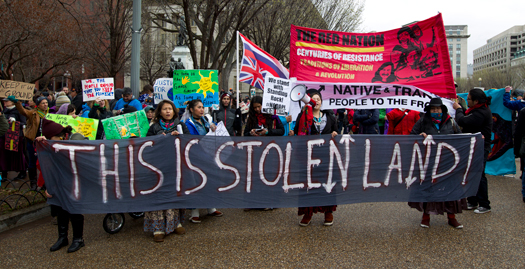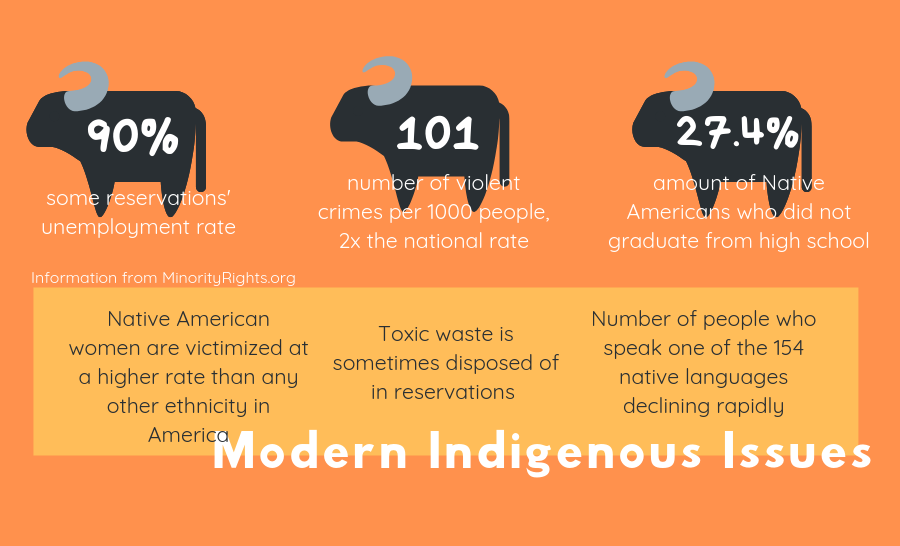
Unfinished Promises: Navigating the Complexities Facing Native American Communities Today
Beyond the romanticized images of the past and the occasional news headline, Native American communities across the United States are grappling with a complex tapestry of contemporary challenges. From the fight for sovereignty and land rights to pervasive health disparities, economic struggles, and the ongoing crisis of missing and murdered Indigenous women, these issues are deeply rooted in historical injustices but manifest acutely in the present day. This article delves into the critical issues confronting Native Americans, highlighting their resilience, their ongoing advocacy, and the urgent need for greater understanding and action.
The Enduring Battle for Sovereignty and Self-Determination

At the heart of many current struggles lies the foundational concept of tribal sovereignty – the inherent right of Native American tribes to govern themselves, manage their lands, and determine their own futures. Recognized as sovereign nations through treaties and federal law, the 574 federally recognized tribes often find their authority challenged or undermined by state and federal governments.
"Sovereignty is not something granted by the federal government; it is an inherent right," states Wilma Mankiller, the first female Principal Chief of the Cherokee Nation, succinctly capturing the essence of this principle. Yet, this inherent right is constantly contested. Issues range from jurisdictional disputes over criminal justice on tribal lands to the regulation of natural resources and the enforcement of tribal laws. The Dakota Access Pipeline (DAPL) protests at Standing Rock, for instance, were a stark demonstration of a tribe’s sovereign right to protect its water and sacred lands being overridden by federal and corporate interests.
The struggle for self-determination also encompasses the fight for control over their own institutions, including education, healthcare, and infrastructure. Decades of federal mismanagement, underfunding, and paternalistic policies have left many tribal nations struggling to provide basic services to their citizens, despite their sovereign status.
Economic Disparity and Infrastructure Gaps
Poverty rates among Native Americans consistently rank among the highest in the U.S. According to the U.S. Census Bureau, the poverty rate for Native Americans was 20.9% in 2022, significantly higher than the national average of 11.5%. This economic disparity is a direct consequence of historical land dispossession, forced relocation, and the systemic denial of economic opportunities.
Many reservations are located in remote areas, far from job markets, and lack essential infrastructure. "You can’t build an economy without roads, without water, without broadband," explains Navajo Nation President Buu Nygren, highlighting the fundamental barriers. Access to high-speed internet, a necessity in the 21st century, remains a luxury for many on tribal lands, hindering education, healthcare, and business development. Housing is also a critical issue, with many homes on reservations lacking adequate sanitation, running water, or being severely overcrowded, contributing to public health crises.
While some tribes have found success through gaming operations, these benefits are not universally distributed, and many tribes do not have the resources or location to pursue such ventures. Diversifying economies, attracting investment, and developing sustainable enterprises remain significant challenges, often hampered by complex federal regulations and limited access to capital.
Health Disparities: A Crisis of Care

Native Americans face some of the most profound health disparities in the nation. They suffer disproportionately from chronic diseases such as diabetes, heart disease, and cancer. Life expectancy for Native Americans is significantly lower than the U.S. average, often by five to ten years.
A major contributing factor is the Indian Health Service (IHS), the federal agency responsible for providing healthcare to Native Americans. Chronic underfunding has plagued IHS for decades, leading to dilapidated facilities, staff shortages, and limited access to specialized care. "The IHS is a broken system," said Dr. Anthony Fauci during the COVID-19 pandemic, acknowledging the severe limitations. The pandemic itself starkly illuminated these vulnerabilities, with Native Americans experiencing some of the highest infection and death rates in the country, largely due to pre-existing conditions, overcrowded housing, and inadequate healthcare infrastructure.
Mental health and substance abuse are also pervasive issues, exacerbated by historical trauma, poverty, and a lack of culturally competent services. Suicide rates among Native youth are alarmingly high, often multiple times the national average, underscoring the deep psychological scars left by generations of oppression and cultural erosion.
The MMIW Epidemic: A Call for Justice
Perhaps one of the most harrowing issues facing Native communities today is the epidemic of Missing and Murdered Indigenous Women, Girls, and Two-Spirit people (MMIWG2S). Indigenous women are murdered at rates ten times higher than the national average, and four out of five Indigenous women have experienced violence in their lifetime.
This crisis is fueled by a complex interplay of factors, including jurisdictional complexities that create loopholes for perpetrators, systemic racism within law enforcement, and a lack of resources for investigations. "Our sisters, our mothers, our daughters are disappearing, and no one is listening," stated Deborah Parker, a member of the Tulalip Tribes and a leading advocate for MMIW, encapsulating the frustration and pain. The cases often go unsolved, and many disappearances are not adequately reported or investigated.
Recent legislative efforts, such as Savanna’s Act and the Not Invisible Act, aim to improve data collection and coordination between tribal, state, and federal law enforcement. However, advocates emphasize that these are just first steps in addressing a crisis that requires comprehensive, culturally sensitive solutions and a fundamental shift in how society values Indigenous lives.
Environmental Justice and Sacred Lands
Native American communities have long been at the forefront of environmental justice movements, recognizing the profound connection between land, culture, and well-being. They often bear the disproportionate burden of environmental pollution, as their lands are targeted for resource extraction (mining, oil and gas drilling), waste disposal, and other industrial activities.
The fight to protect Bears Ears National Monument in Utah, sacred to numerous tribes, from reductions in size and protection, is another example of the ongoing struggle to safeguard ancestral lands from exploitation. Climate change also poses unique threats, impacting traditional food sources, exacerbating droughts and floods, and threatening cultural practices tied to specific landscapes.
For many Indigenous peoples, land is not merely property but a living entity, intertwined with their spiritual identity, history, and future. The fight for environmental justice is thus inseparable from the fight for cultural survival and self-determination.
Education and Cultural Preservation
Education on reservations often suffers from chronic underfunding, outdated facilities, and a lack of culturally relevant curricula. The legacy of forced assimilation through boarding schools, which aimed to "kill the Indian, save the man," continues to impact educational outcomes and trust in the system.
Despite these challenges, there is a powerful movement for cultural revitalization and language preservation. Tribes are investing in language immersion programs, cultural centers, and curricula that reflect Indigenous histories and worldviews. "Our languages are our identity. They connect us to our ancestors, our lands, and our way of life," says linguist Dr. Jessie Little Doe Baird of the Mashpee Wampanoag Tribe, who led the effort to revive the Wampanoag language. These efforts are crucial for healing historical trauma and ensuring that future generations can connect with their heritage.
A Path Forward: Resilience and Advocacy
Despite the immense challenges, Native American communities demonstrate remarkable resilience, determination, and innovation. They are actively engaged in asserting their sovereignty, rebuilding their economies, revitalizing their cultures, and advocating for justice at all levels.
From the halls of Congress, with figures like Secretary of the Interior Deb Haaland, the first Native American cabinet secretary, to grassroots movements on reservations, Indigenous voices are growing louder and more impactful. They are forming powerful coalitions, educating the public, and holding governments accountable to their trust responsibilities and treaty obligations.
Addressing the current issues facing Native Americans requires more than just policy changes; it demands a fundamental shift in understanding and respect. It requires honoring treaties, investing equitably in tribal nations, recognizing inherent sovereignty, and supporting self-determination. The path forward is one of partnership, justice, and genuine reconciliation, acknowledging that the strength and well-being of Native American communities are vital for the health and vibrancy of the entire nation. The promises made must finally be kept.


